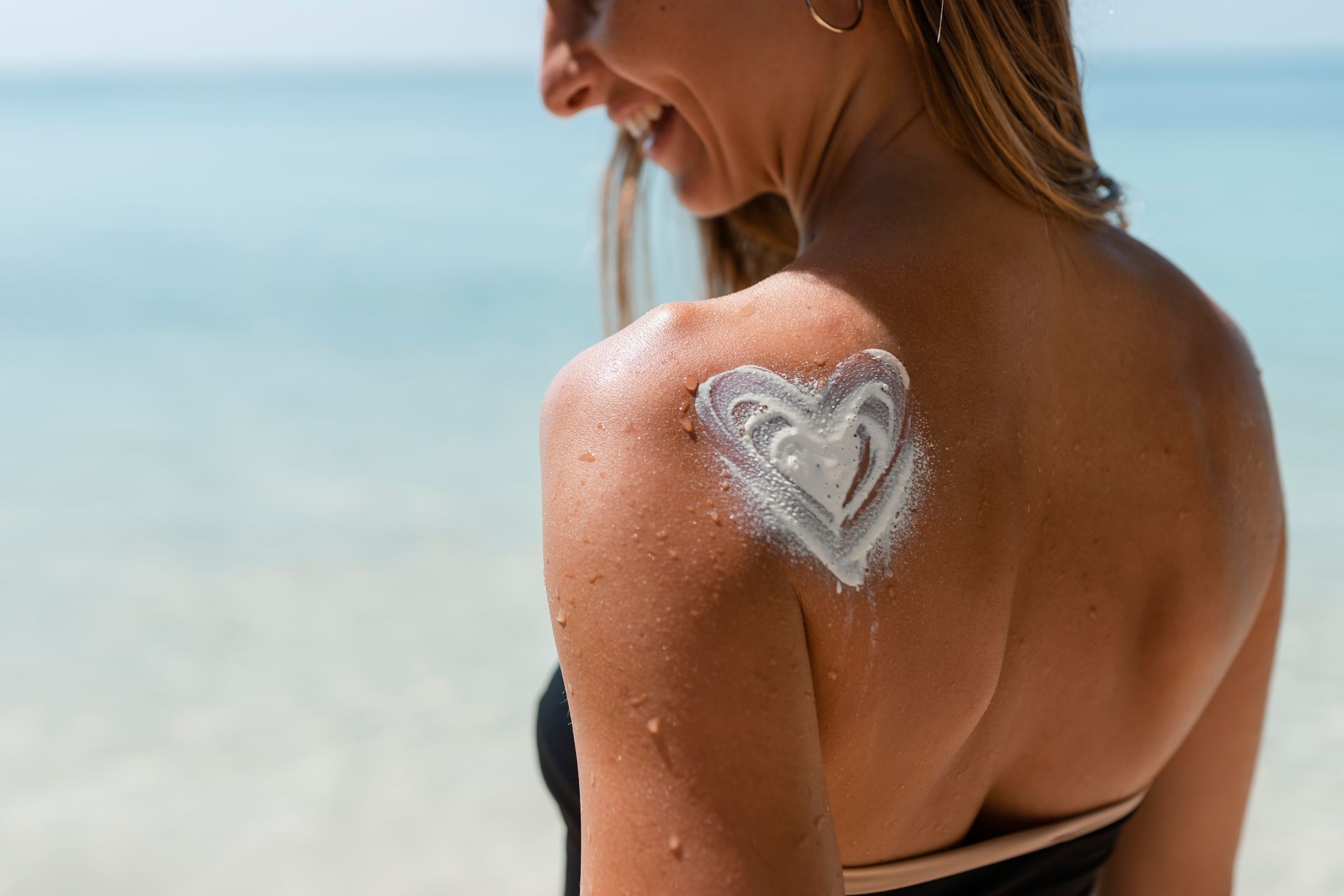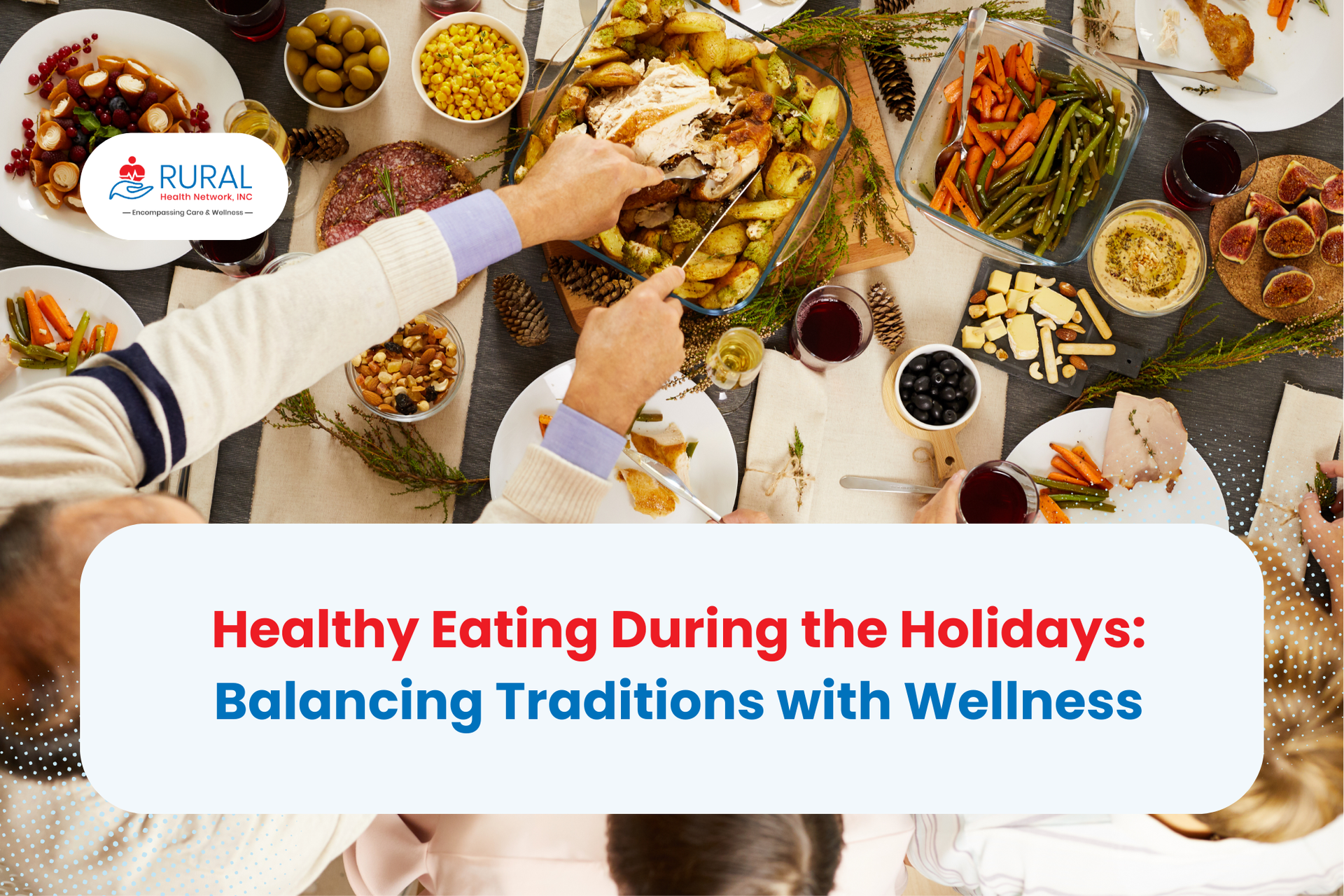Summer is coming, and while long days by the pool and backyard barbecues are making a comeback, many of us are left worrying about scratching our arms and legs, wondering why our skin feels tight and flaky. While many associate dry skin with winter, summer has its own set of culprits that can leave your skin feeling tight and uncomfortable.
Let our experts at
Rural Health Network Inc. help you find out what causes your dry skin during the warmer season so you can take better care of it and feel more comfortable in your own body. We’ll walk you through the most common skin stressors, how to lock in moisture, and connect you with personalized skincare support available at our clinics.
Healthy skin starts with understanding what’s happening beneath the surface, so let’s get yours summer‑ready!
Glow Into Summer with Confidence
Why Is My Skin So Dry in Summer?
To know
how to prevent dry skin in summer, let’s first understand why it happens. Here’s how:
Hot Air + Faster Evaporation
When temperatures climb, moisture on your skin evaporates faster. This can leave your skin’s surface parched, leading to that tight, uncomfortable feeling.
Low Humidity Drains Moisture
In many sunny locales, humidity levels drop in summer. Dry air acts like a sponge—pulling water and moisture right out of your skin cells.
From Outdoor Heat to Indoor AC
After a steamy day outside, retreating into air-conditioned spaces might feel great, but
AC
further removes moisture from the air (and from your skin). This constant switch can stress your skin’s natural barrier.
Sun Exposure and UV Damage
Stepping out in the sun feels amazing, but prolonged exposure to it can lead to dry, irritated skin. Here’s what happens and how to protect yourself:
UV Rays & Lipid Barrier Breakdown
Sunlight’s ultraviolet (UV) rays penetrate the skin, weakening the lipid (oil) layer that helps lock in moisture. When this barrier is compromised, water escapes more easily, leaving the skin parched. Make sure to pay attention to the UV Index levels in your area and keep this in mind:
Inflammation & Sunburn
A mild sunburn may feel warm and tight, while a more severe burn causes redness, peeling, and flaky patches. All of this inflammation worsens moisture loss and can slow down your skin’s natural repair process.
Sunscreen: Skin-Friendly or Not?
Sunscreen is essential to block harmful UV rays; however, some high-SPF or matte-finish formulas contain alcohol or chemical filters that can strip oils when applied excessively. Choose
broad-spectrum, hydrating sunscreens labeled “for sensitive or dry skin” and reapply only as needed.
Chlorine and Saltwater Effects
Usually, when you think about summer, taking a dip in the pool or catching some waves at the beach is the go-to activity. But having fun in the water comes with hidden costs.
Chlorine Strips Natural Oils
Chlorine disinfects pool water by breaking down oils on its surface. Unfortunately, it can do the same to your skin. Stripped of its natural protective layer, your skin loses moisture faster.
Sea Salt’s Dehydrating Action
Ocean water feels refreshing, but salt crystals draw water out of your skin cells. After a salty swim, you might notice tightness or “sandpaper” roughness, especially in exposed spots like elbows and knees.
But don’t worry! It's possible to achieve softer skin while still enjoying some summer fun in the water with a few simple steps.
- Rinse ASAP: Rinse with fresh water right after swimming to wash away chlorine or salt.
- Gentle Cleansing: Use a mild, fragrance-free body wash that preserves skin oils.
- Lock in Moisture: Pat dry (don’t rub!), then apply a light, hydrating lotion within three minutes of toweling off.
Personal Habits That Can Worsen Dryness
Even with the best intentions, some everyday routines might harm your skin more than good, especially in the summer. Here’s what to watch out for:
Hot Showers = Moisture Loss
Long, steamy showers feel relaxing, but hot water strips away your skin’s natural oils. This leaves your skin vulnerable and even drier than before. Stick to lukewarm under 10-minute showers instead.
Harsh Soaps & Scrubs
Bar soaps with heavy fragrances or strong exfoliants might promise a deep clean but can disrupt your skin’s natural barriers, leading to flaking or irritation. Opt for “hydrating” or “for sensitive skin” soaps instead and avoid daily scrubbing.
Skipping Moisturizer (or Using the Wrong one)
To some, using moisturizer in such hot weather can feel greasy, so they just skip moisturizing altogether. But without it, the skin can quickly dry out and feel tight. Depending on your skin type, you need to choose a moisturizer that fits what your skin needs.
Dehydration and Diet
You’ve moisturized on the outside—but don’t forget to hydrate from within. What you drink (and eat!) plays a big role in keeping your skin smooth, soft, and healthy during summer.
Water Woes
High temperatures = more sweating = more fluid loss. If you’re not replacing that water, your skin may start to look dull, feel rough, and lose its bounce.
Missing Nutrients = Dry Skin
Your skin loves support from the inside. If you’re low on certain vitamins and healthy fats, dryness can sneak up quickly. Look for:
- Essential fatty acids
- Vitamin A
- Vitamin C
- Vitamin E
Stay cool and nourished with water-rich snacks like:
- Cucumber slices
- Watermelon chunks
- Fresh berries
- Coconut water
- Infused water (add lemon, mint, or cucumber for a boost)
Preventive Measures & Dry Skin Care Tips for Summer
Now that you know what causes dry summer skin, let’s stay ahead with a few simple habits:
Choose a Gentle Cleanser
Skip the harsh stuff—your skin needs soothing. Look for:
- Labels that say “soap-free,” “non-foaming,” or “pH-balanced.”
- Calming ingredients like oatmeal, ceramides, or aloe.
Moisturize with the Right Formula
Hot, humid weather calls for lightweight hydration; nothing stick or heavy. Choose:
- Hyaluronic acid or glycerin
- Oil-free, non-comedogenic, or gel-based formulas.
- Aloe vera or cucumber extract for cooling effect.
Suit Up Against the Sun
Don’t forget the power of what you wear!
- Go for lightweight, breathable materials like cotton or linen.
- Add a wide-brimmed hat and UV-blocking sunglasses.
- Try UPF-rated clothing for added skin protection
Balance Your Indoor Air
Air conditioning can zap moisture from the air and your skin.
- Use a cool mist humidifier in your bedroom or home office.
- Aim for 40–60% indoor humidity.
- Bonus tip: Add a small bowl of water near your AC unit for a
low-tech humidity boost.
Clear Skies Ahead with a Health Check from Rural Health Network Inc.
Don’t let summer dry skin keep you from enjoying everything the wonderful season has to offer.
Beat dry skin and sun exposure with Rural Health Network Inc.’s services and support to help maintain your smooth, glowing skin from sun-filled days through starry nights.
Comprehensive Health Assessments
We take a full look at your health, including skin concerns, so we can catch any underlying issues early and keep you feeling your best.
Screening and Diagnostics
From skin-related conditions to seasonal health concerns, we provide clear answers and real solutions so you are never left guessing or confused.
Personalized Wellness Plans
No cookie-cutter planning here. We’ll create a plan that fits your lifestyle, goals, and unique health to ensure your skin can handle today’s hot and dry summer season.
Let us help you enjoy the summer season feeling confident, comfortable, and cared for because your health deserves year-round attention—even in flip-flop weather.
Feel Good In Your Skin this Season
Why is my skin peeling even though it's summer?
Peeling often happens after a sunburn or from extremely dry skin that starts flaking. Even in summer, your skin can lose hydration fast—especially after UV exposure, swimming, or skipping moisturizer. If your skin is peeling, it may be your body’s way of shedding damaged or dehydrated cells.
How can I treat dry skin during the summer season?
Use gentle, fragrance-free cleansers, moisturize with lightweight lotions or gels, and avoid long hot showers. Stick to cool or lukewarm water, wear breathable protective clothing, and consider using a humidifier indoors. And don’t forget SPF to shield your skin from UV damage!
Are rural environments more likely to cause dry skin in summer?
Some rural areas may have lower humidity, increased outdoor exposure, or more time spent in the sun, which can contribute to dry skin. But with the right habits and support (like the care we offer at Rural Health Network), you can keep your skin protected and healthy.
When should I seek medical help for dry skin in summer?
If your skin is cracking, bleeding, or showing signs of infection (like redness, swelling, or pus), or if dryness isn’t improving with home care, it’s time to check in with a healthcare provider. It could be a sign of an underlying skin condition that needs attention.













